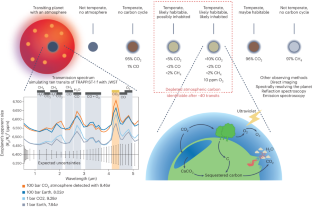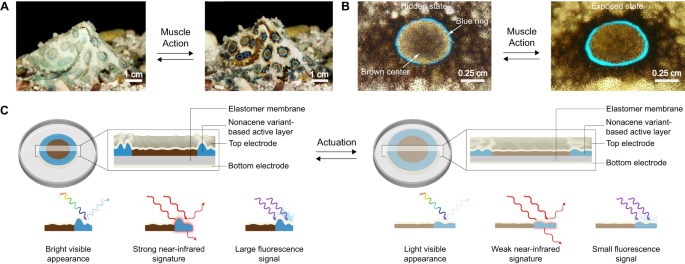2023-12-28 マサチューセッツ工科大学(MIT)
◆地球型の惑星が同じ系統の他の惑星よりも大気中の二酸化炭素が著しく少ない場合、それが液体水と生命の可能性の兆候であると考えられます。この新しい特徴はNASAのジェームズ・ウェッブ宇宙望遠鏡で検出可能であり、これまでの生命の存在の兆候よりも現在の技術で測定可能であるとされています。
<関連情報>
- https://news.mit.edu/2023/carbon-lite-atmosphere-life-terrestrial-planets-mit-study-1228
- https://www.nature.com/articles/s41550-023-02157-9
太陽系外惑星の水海洋とバイオマスのトレーサーとしての大気中の炭素枯渇 Atmospheric carbon depletion as a tracer of water oceans and biomass on temperate terrestrial exoplanets
Amaury H. M. J. Triaud,Julien de Wit,Frieder Klein,Martin Turbet,Benjamin V. Rackham,Prajwal Niraula,Ana Glidden,Oliver E. Jagoutz,Matej Peč,Janusz J. Petkowski,Sara Seager & Franck Selsis
Nature Astronomy Published:28 December 2023
DOI:https://doi.org/10.1038/s41550-023-02157-9

Abstract
The conventional observables to identify a habitable or inhabited environment in exoplanets, such as an ocean glint or abundant atmospheric O2, will be challenging to detect with present or upcoming observatories. Here we suggest a new signature. A low carbon abundance in the atmosphere of a temperate rocky planet, relative to other planets of the same system, traces the presence of a substantial amount of liquid water, plate tectonics and/or biomass. Here we show that JWST can already perform such a search in some selected systems such as TRAPPIST-1 via the CO2 band at 4.3 μm, which falls in a spectral sweet spot where the overall noise budget and the effect of cloud and/or hazes are optimal. We propose a three-step strategy for transiting exoplanets: detection of an atmosphere around temperate terrestrial planets in about 10 transits for the most favourable systems; assessment of atmospheric carbon depletion in about 40 transits; and measurements of O3 abundance to disentangle between a water- versus biomass-supported carbon depletion in about 100 transits. The concept of carbon depletion as a signature for habitability is also applicable for next-generation direct-imaging telescopes.



